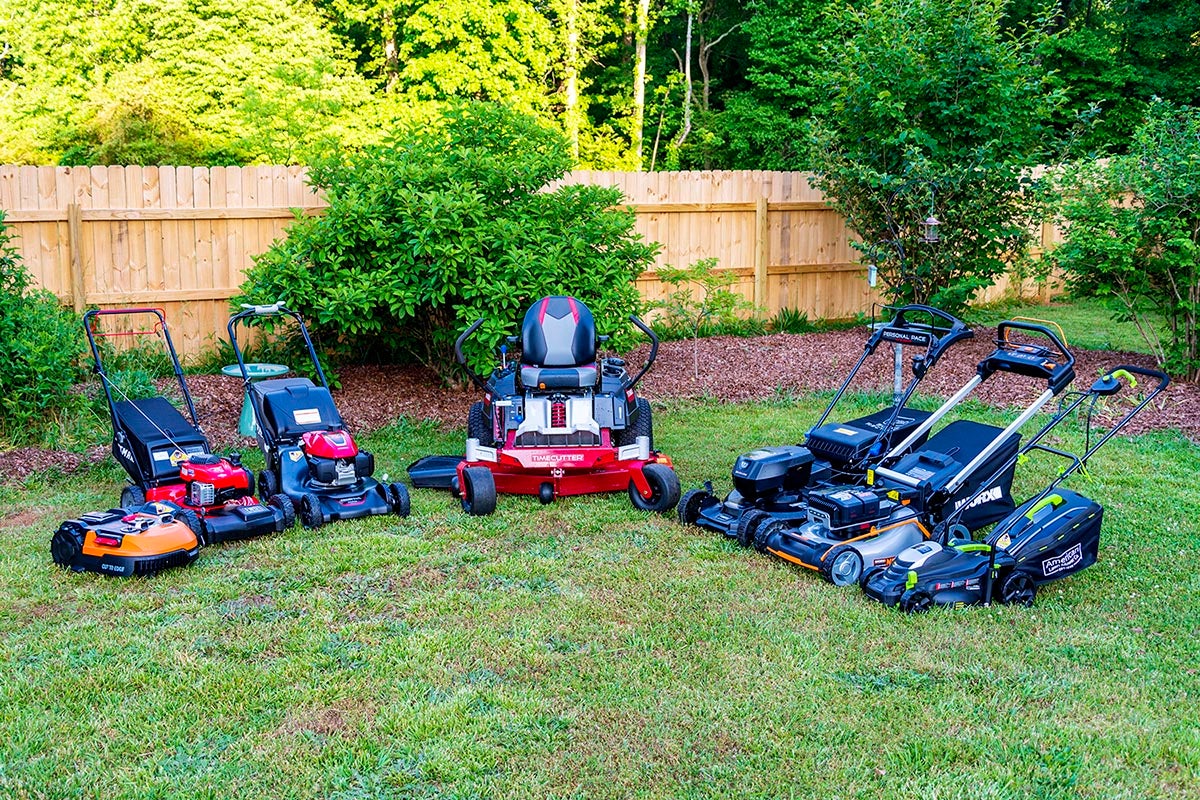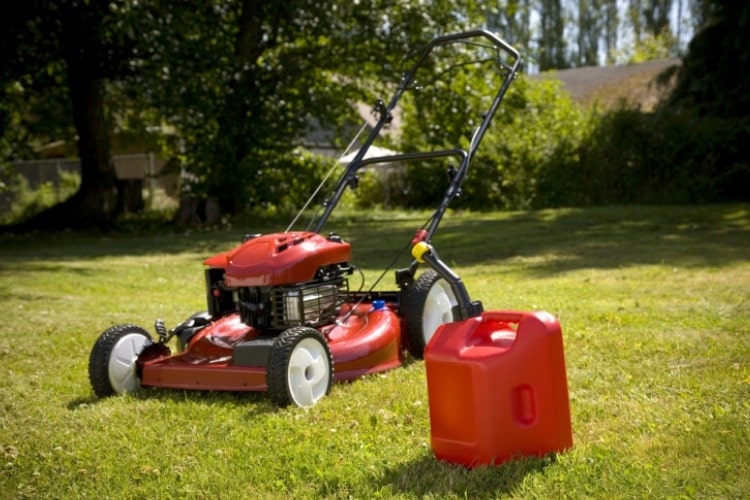Lawn Mower vs Lawn Tractor: Tips for Choosing the Right Equipment

In the realm of lawn maintenance, the decision between utilizing a lawn mower or upgrading to a lawn tractor holds significant implications for achieving a well-groomed yard. Lawn Mower vs Lawn Tractor: Tips for Choosing the Right Equipment addresses this pivotal choice that homeowners often encounter. The distinction between these two equipment types can profoundly affect the efficiency and outcome of your landscaping efforts. By exploring the essential factors and expert insights offered in this guide, you’ll be equipped to make an informed decision that aligns with your lawn’s unique characteristics and your desired level of care. Whether you’re aiming for a pristine golf-course-like expanse or an elegantly trimmed backyard haven, this guide provides invaluable guidance for selecting the perfect tool.
Overview of Lawn Mower Vs Lawn Tractor
Lawn Mower and Lawn Tractor are both types of outdoor power equipment used for maintaining and cutting grass on lawns. While they share comparable objectives, they exhibit distinct divergences in their design aspects, size, and functionality. Here’s an overview of each:
The Definition of Lawn Mower

A lawn mower is a smaller, more compact machine designed primarily for cutting grass on residential lawns and smaller areas. There are several types of lawn mowers, including:
- Push Mower: Operated manually by pushing it across the lawn. Suitable for smaller yards and requires physical effort to operate.
- Self-Propelled Mower: Equipped with a drive system that helps propel the mower forward, reducing the effort needed from the operator.
- Electric Mower: Powered by electricity, either corded or battery-operated, offering quieter operation and low maintenance.
- Gasoline Mower: Powered by a gasoline engine, providing more cutting power and range but producing more noise and emissions.
- Lawn mowers are best suited for flat and relatively small lawns, and they come in various cutting widths to accommodate different lawn sizes.
Lawn Tractor:

A riding mower, often referred to as a lawn tractor or ride-on mower, is a larger and more powerful machine designed for bigger lawns and more extensive landscaping tasks. Lawn tractors are operated by sitting on the machine and using controls to maneuver and control the cutting process.
Key features of lawn tractors include:
- Larger Cutting Decks: Lawn tractors have wider cutting decks, usually ranging from 30 to 60 inches, allowing them to cover more ground in less time.
- Greater Horsepower: Lawn tractors have more powerful engines, typically ranging from 12 to 30 horsepower, providing increased cutting efficiency and the ability to tow attachments like trailers, carts, and lawn aerators.
- Versatility: Lawn tractors can be equipped with various attachments, such as snow blades, baggers, spreaders, and dethatchers, making them more versatile for other lawn maintenance tasks beyond cutting grass.
- Lawn tractors are suitable for larger, uneven, or hilly lawns where using a push mower would be impractical or physically demanding.
In summary, lawn mowers are smaller, push-operated or self-propelled machines best suited for small to medium-sized lawns, while lawn tractors are larger, ride-on machines with greater power and versatility, suitable for larger lawns and more significant landscaping tasks. The choice between a lawn mower and a lawn tractor depends on the size and terrain of your lawn and the specific features and functionalities you require.
Key Differences between Lawn Mower Vs Lawn Tractor


The key differences between a Lawn Mower and a Lawn Tractor can be summarized in the following points:
Size and Cutting Width
- Lawn Mower: Generally smaller in size with a narrower cutting width, usually ranging from 14 to 30 inches. Suitable for small to medium-sized lawns.
- Lawn Tractor: Larger in size with a wider cutting width, typically ranging from 30 to 60 inches. Ideal for medium to large-sized lawns and extensive landscaping.
Operation
- Lawn Mower: Operated by pushing it manually (push mower) or with the assistance of a drive system (self-propelled). The operator walks behind the mower during the operation.
- Lawn Tractor: Operated by sitting on the machine and using controls to maneuver. The operator rides on the lawn tractor during operation.
Power Source
- Lawn Mower: Available in electric (corded or battery-operated) or gasoline-powered versions.
- Lawn Tractor: Almost always gasoline-powered, with more substantial engines ranging from 12 to 30 horsepower.

Terrain and Slope Handling
- Lawn Mower: Best suited for flat and even terrain due to its compact size and limited power. It may struggle with steep slopes.
- Lawn Tractor: Designed for handling various terrains, including uneven and hilly areas, due to its larger size, powerful engine, and better traction.
Versatility and Attachments
- Lawn Mower: Limited in terms of attachments and additional functionalities. Some models may have a bagging or mulching option, but they are primarily designed for grass cutting.
- Lawn Tractor: Highly versatile, with the ability to attach various accessories and implements, such as trailers, baggers, snow blades, spreaders, and aerators. This makes lawn tractors suitable for a wide range of lawn maintenance tasks beyond mowing.
Efficiency and Speed
- Lawn Mower: Generally slower and may require more time to cover a large area due to its manual operation or lower-powered engine.
- Lawn Tractor: Faster and more efficient in cutting larger lawns, thanks to its ride-on design and powerful engine.
Cost
- Lawn Mower: Usually more affordable compared to lawn tractors.
- Lawn Tractor: Typically more expensive due to its larger size, more powerful engine, and additional features.
In summary, lawn mowers are smaller, manual or self-propelled machines suitable for smaller lawns, while lawn tractors are larger, ride-on machines with greater power and versatility, ideal for medium to large lawns and a variety of lawn maintenance tasks. The choice between the two depends on the size of your lawn, the terrain, and the specific features and functionalities you need.
Factors to Consider When Choosing Between a Lawn Mower Vs Lawn Tractor

Choosing between a lawn mower and the effectiveness of a lawn tractor relies on multiple considerations, including the dimensions of your yard, terrain, budget, and specific needs. Here are some key factors to consider when making your decision:
Lawn Size
If you have a small to medium-sized lawn (typically under half an acre), a lawn mower might be sufficient. For larger lawns, especially those over one acre, a lawn tractor can significantly speed up the mowing process.
Terrain and Landscape
Consider the complexity of your lawn’s terrain. Lawn mowers are better suited for flat and even surfaces, while lawn tractors are more adept at handling rough, hilly, or uneven terrains.
Cutting Width
Lawn tractors typically sport broader cutting decks in contrast to standard lawn mowers. This expanded cutting area translates to a reduction in the number of passes needed to cover your lawn, ultimately leading to time saved during your mowing sessions.
Maneuverability
Lawn mowers are usually more maneuverable, making them better for navigating around obstacles like trees, flower beds, and other landscaping features. Lawn tractors may struggle in tight spaces.

Additional Attachments
Lawn tractors often come with the option to attach additional implements like trailers, carts, snow blowers, and more. If you need to perform other tasks beyond mowing, a lawn tractor may be more versatile.
Cost
When considering your budget, lawn mowers often present a more economical choice than lawn tractors. If financial constraints are a concern and your lawn is relatively small, opting for a lawn mower could be the more suitable decision.
Maintenance
Lawn mowers are generally easier to maintain since they have fewer components and are less complex than lawn tractors. This can result in lower maintenance costs and easier DIY repairs.
Fuel Efficiency
In terms of fuel consumption, lawn mowers generally outperform lawn tractors due to their smaller engines. If you’re environmentally aware and mindful of fuel usage, this factor could play a significant role in your decision-making process.

Storage Space
Lawn mowers are often characterized by their compact size, requiring less storage space in comparison to larger lawn tractors. This space-saving advantage might be a key consideration, especially if storage is limited on your property.
Personal Preference
Ultimately, your personal preferences and comfort level with using either a lawn mower or a lawn tractor should also play a role in your decision.
In summary, if you have a small to medium-sized lawn with straightforward terrain and a limited budget, a lawn mower might be sufficient. However, if you have a larger lawn, complex terrain, and need extra versatility for various tasks, a lawn tractor could be the better choice. Take these factors into account to arrive at a well-informed decision that best suits your specific needs.
FAQs

Q: Can I use a lawn tractor on a small lawn?
While you technically can use a lawn tractor on a small lawn, it might not be the most practical choice. Lawn tractors are better suited for large lawns where their power and efficiency can shine. For small lawns, a regular lawn mower would be more maneuverable and easier to navigate around tight spaces.
Q: What type of lawn mower is suitable for uneven terrain?
For uneven terrain, a self-propelled lawn mower with larger wheels and adjustable cutting height is a good option. These mowers can handle bumps and slopes more effectively, and their adjustable cutting height allows you to mow the grass at an even level despite the uneven ground.
Q: Are there any safety precautions I should follow while operating a lawn tractor?
Absolutely! Safety should always be a top priority when using any lawn equipment, including lawn tractors. Here are some essential safety precautions:
- Read and understand the operator’s manual before using the lawn tractor.
- Always wear appropriate safety gear, such as closed-toe shoes, eye protection, and hearing protection.
- Keep children and pets away from the mowing area.
- Avoid mowing on steep slopes or wet, slippery terrain.
- Be cautious when making turns, especially on uneven ground.
- Use the seatbelt if the lawn tractor is equipped with one.
- Never leave a running lawn tractor unattended.
- Before performing maintenance or cleaning on the machine, ensure the engine is turned off and wait until all moving components have ceased their operation.
Always follow the manufacturer’s safety guidelines and recommendations for your specific lawn tractor model.

The Bottom Line
In the dynamic world of lawn care, the decision between a lawn mower and a lawn tractor is a pivotal one. As we’ve explored in this guide, “Lawn Mower vs Lawn Tractor: Tips for Choosing the Right Equipment”, both options come with distinct features that cater to specific needs and preferences. Whether you’re managing a sprawling estate or a modest backyard, the considerations we’ve delved into shed light on the factors that can guide your choice. From cutting deck width to budget considerations, this guide aids in tailoring your choice to your lawn’s unique demands. By evaluating these factors, you can confidently select equipment that aligns with your needs. This ensures efficient and effective lawn maintenance, reflecting your dedication to a well-kept outdoor space.
Related Articles